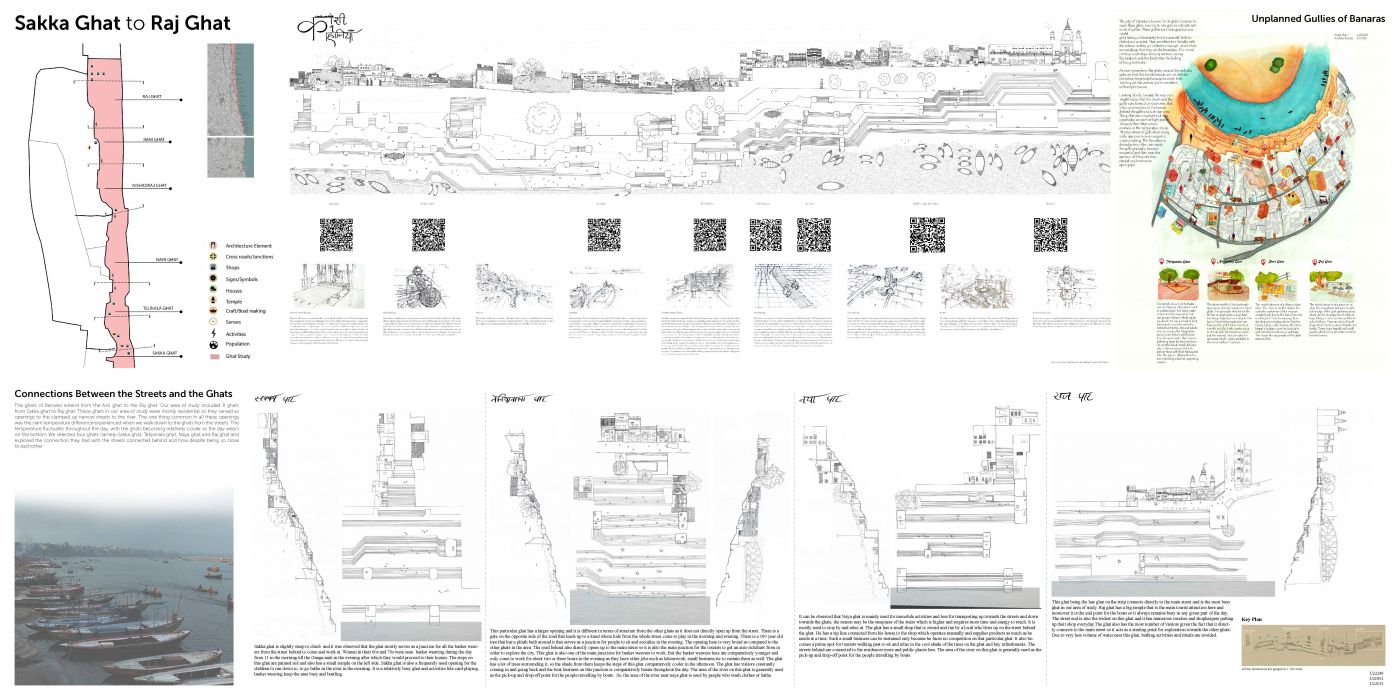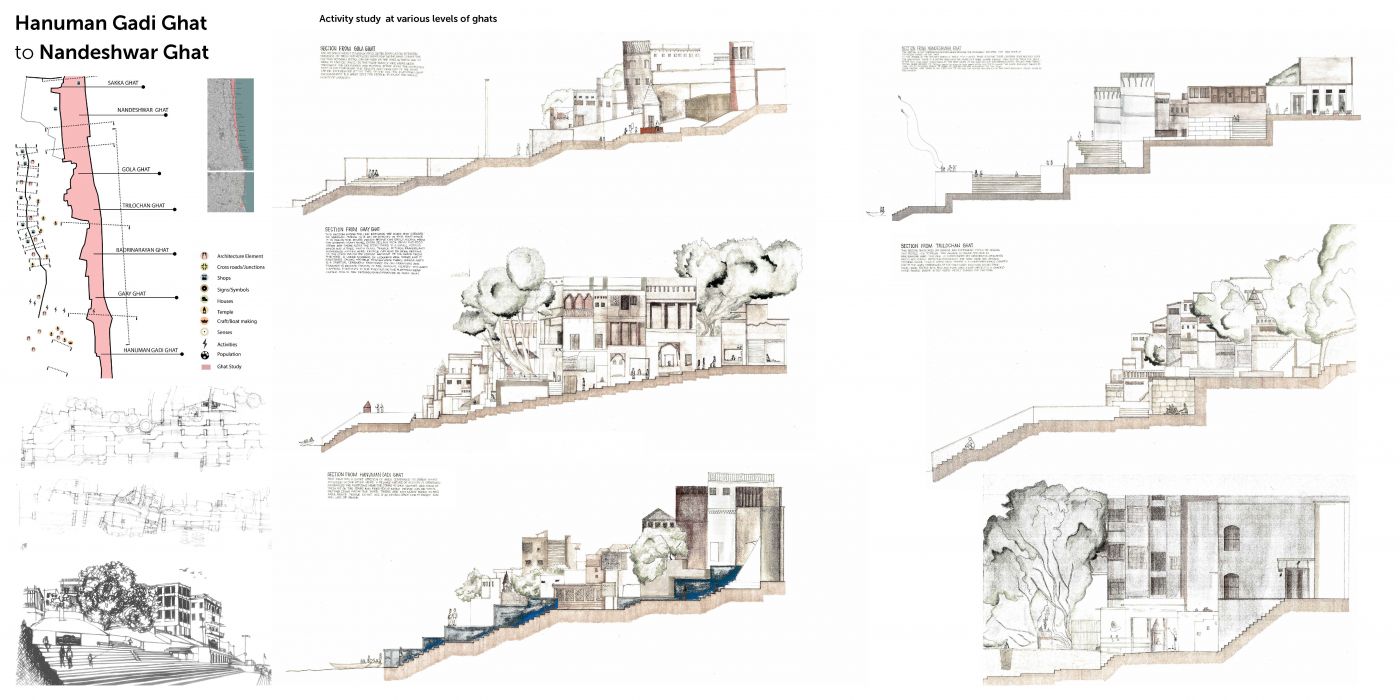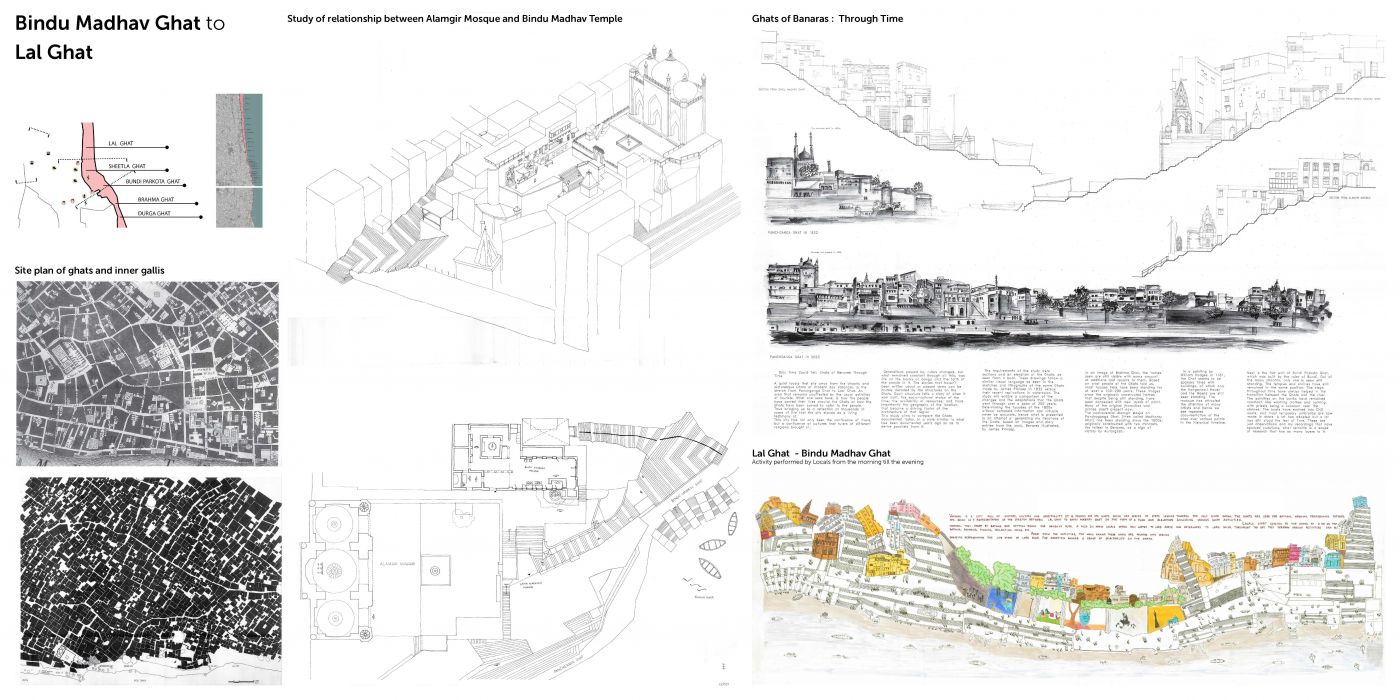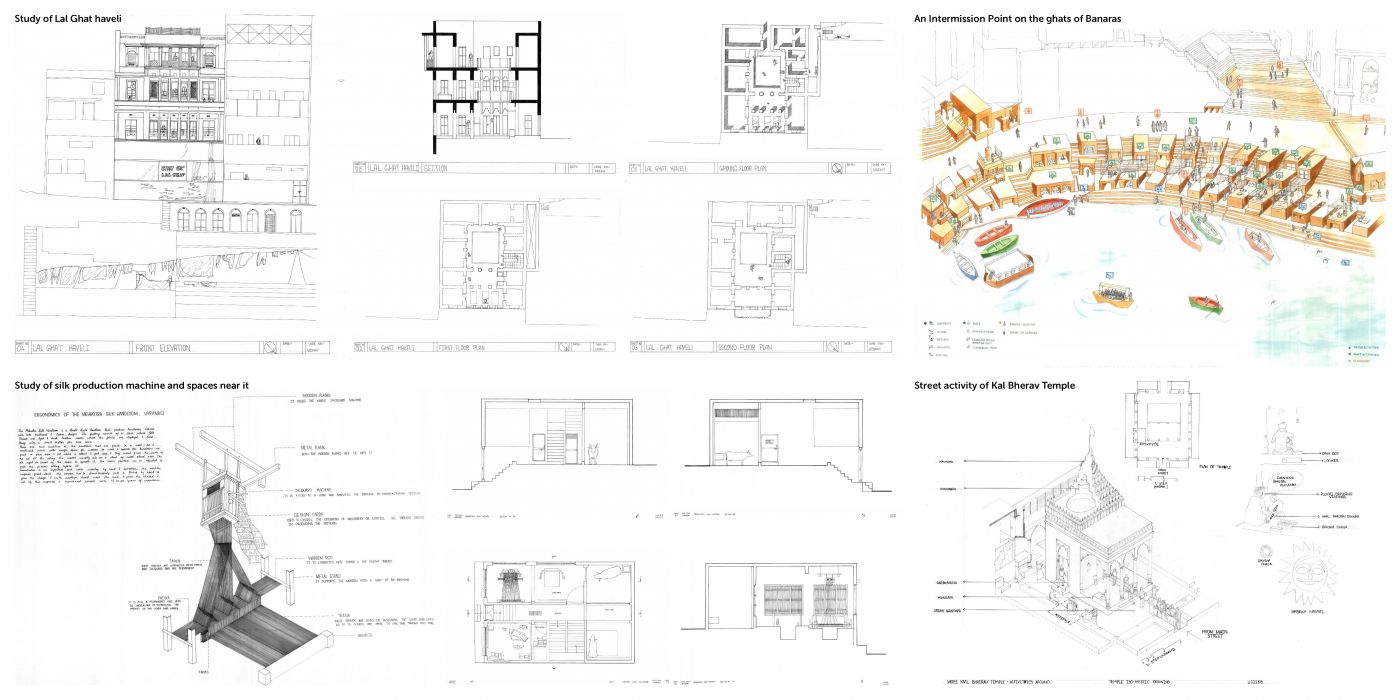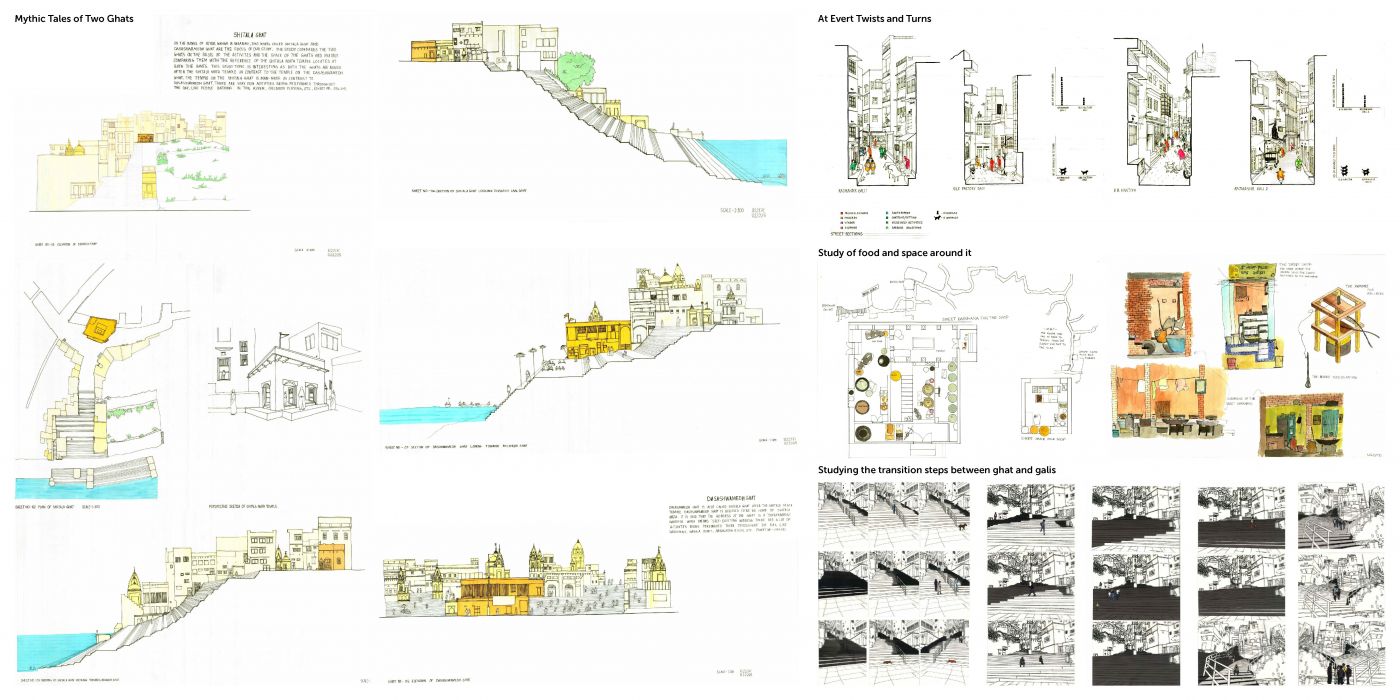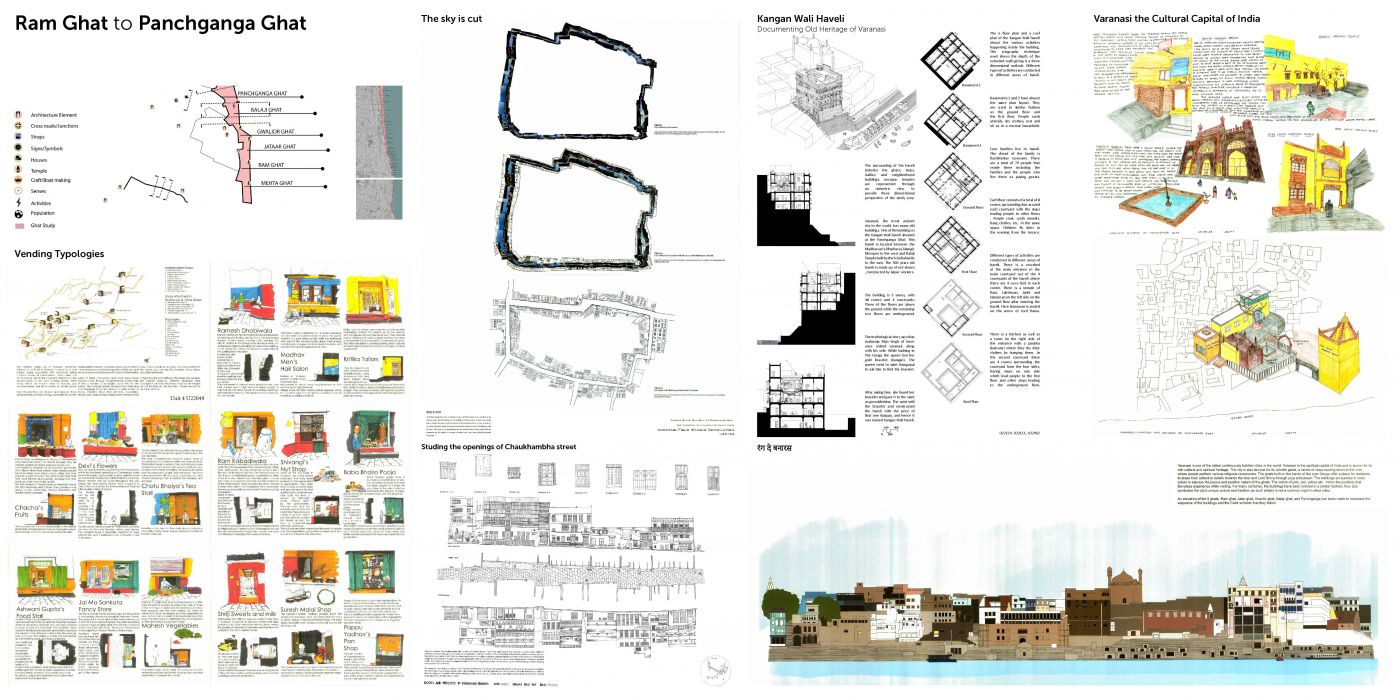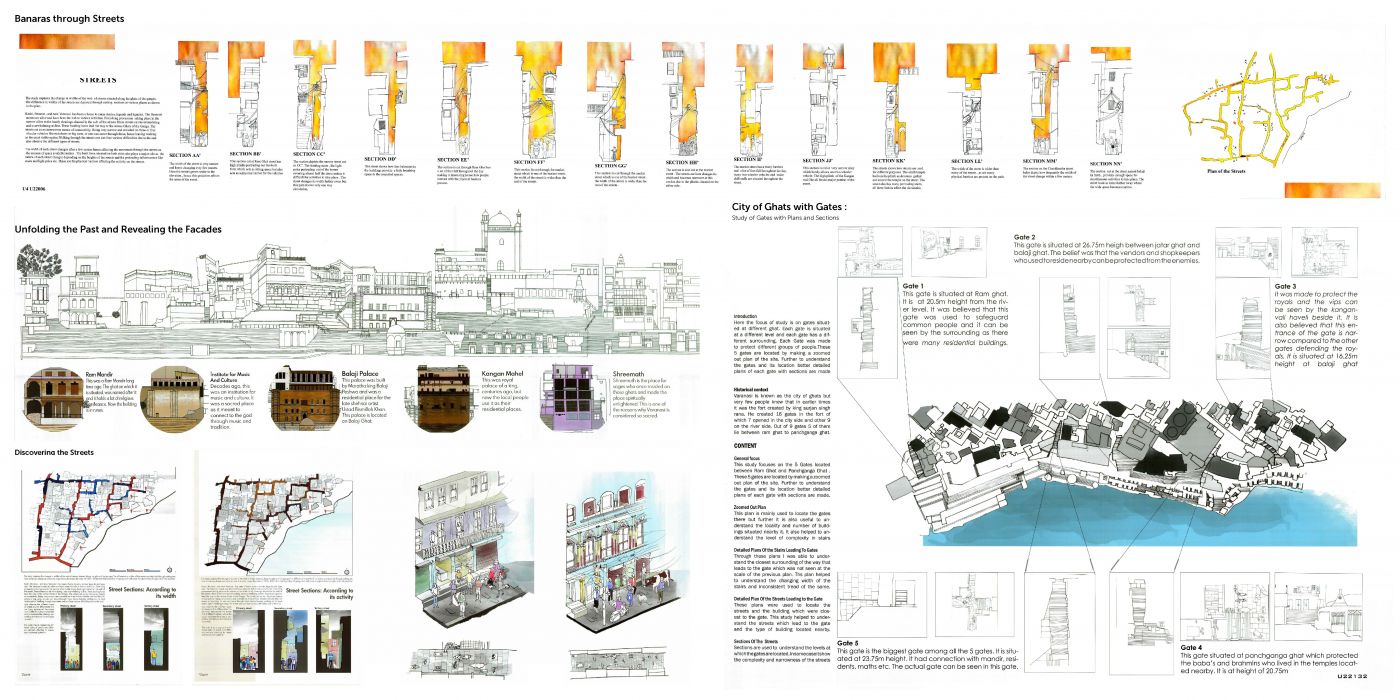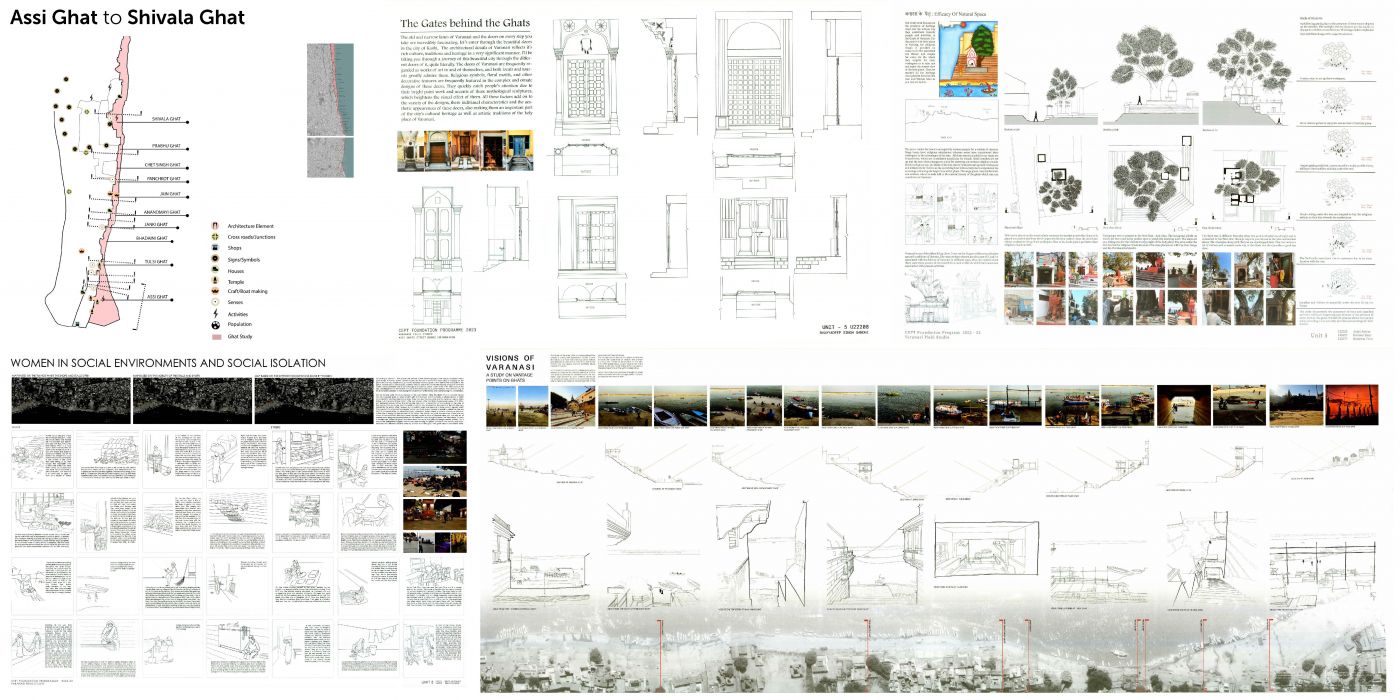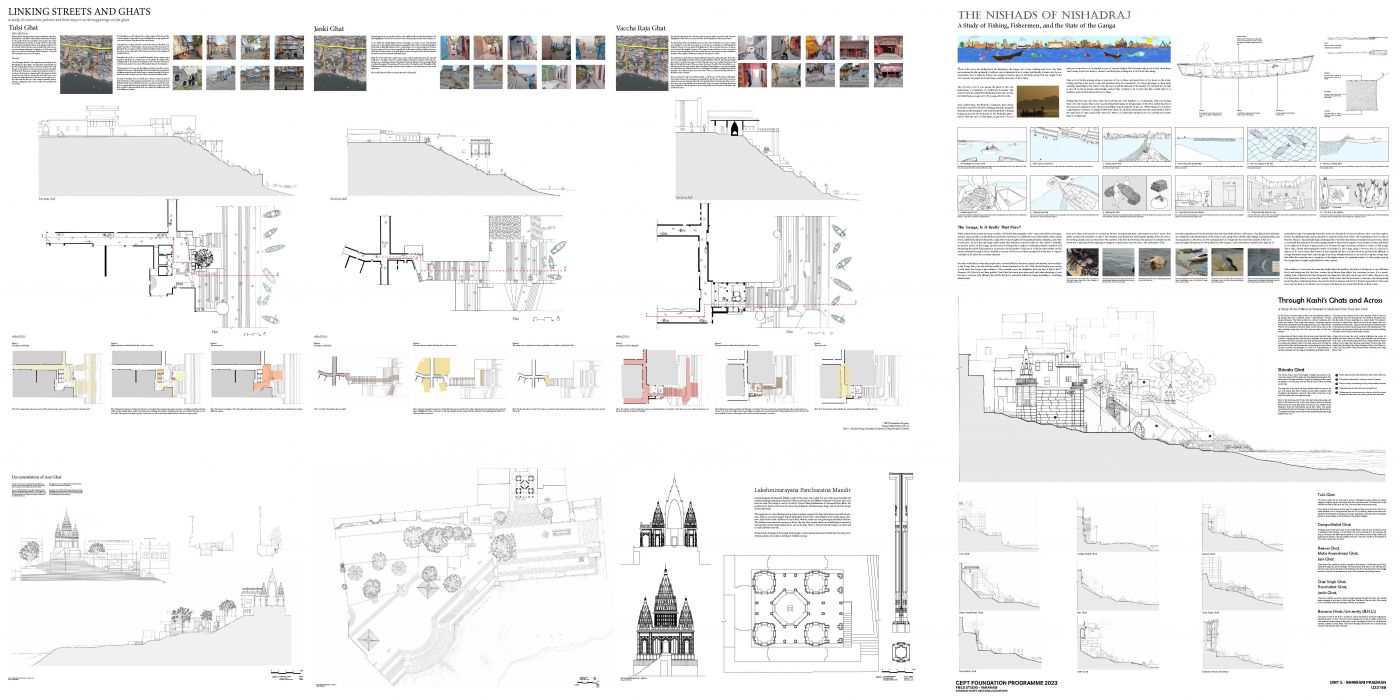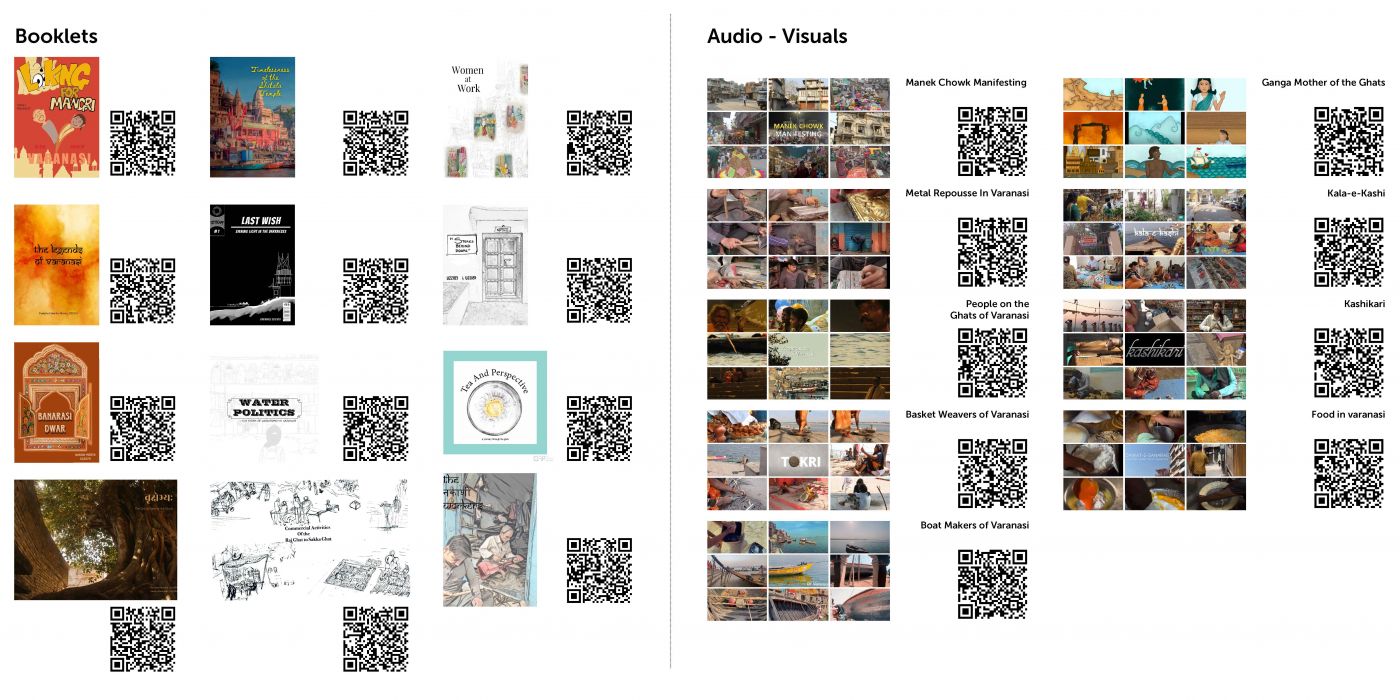Your browser is out-of-date!
For a richer surfing experience on our website, please update your browser. Update my browser now!
For a richer surfing experience on our website, please update your browser. Update my browser now!
A new place promises voices and stories that resonate with everyone’s curiosity and interests. When the place is Varanasi, these stories touch upon beliefs which have evolved across centuries, often written into the way spaces have been built and inhabited. For a student of built form, that is an opportunity to test out the knowledge, skills and abilities they have acquired and to bring them together in understanding and presenting narratives that reflect their glimpses of the city. Building on the first semester of the CEPT Foundation Programme, which is highly structured in its approach to developing foundational skills ranging from representation (through sketches and drawings) to visualization and to visual and written communication, the field studio offers the challenge of freedom. The stories that emerge in the process are not only those of individual students, capturing fascinating aspects of the ghats and streets they spend time observing and interacting with, but also those of units guided through specific journeys of discovery by tutor teams with diverse approaches and strategies. Over the course of six days in Varanasi, initial observations recorded through annotated sketches and photographs turn into storyboards beginning to articulate narratives. The immediacy of conversations with people – boatmen, shopkeepers, women living in ashrams, pilgrims – gives way to a deeper understanding of what makes public and more intimate spaces alive. Starting questions are followed up, detailed through gauged drawings, plans and elevations, ensuring that all narrative ingredients are captured before returning to Ahmedabad. While some of the narratives took shape in discussions on the ghats themselves, others traveled back to Ahmedabad in their raw form, postponing decisions about representation. Back in the studio, all the layers come together through individual choices of genre, the balance of visual representation, and text. The diversity among students and tutors working with them is what makes possible the variety in the stories that form the outcome of the field studio: from the ones that painstakingly mapped, in as much detail as the time permitted, acts of daily living in specific spaces; to the ones which attempted to capture imaginatively, through symbols and color, the rhythms of music and making, religious and mundane rituals, a moment of Varanasi. Their value lies in their ability to mark not only an aspect of life in the city, but also a first-year’s student first experience of claiming the voice and creativity of articulating a narrative of their own.
